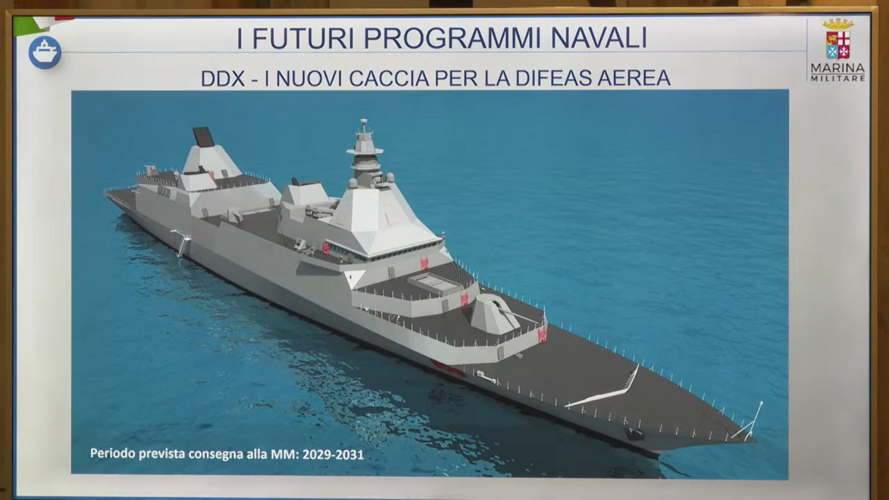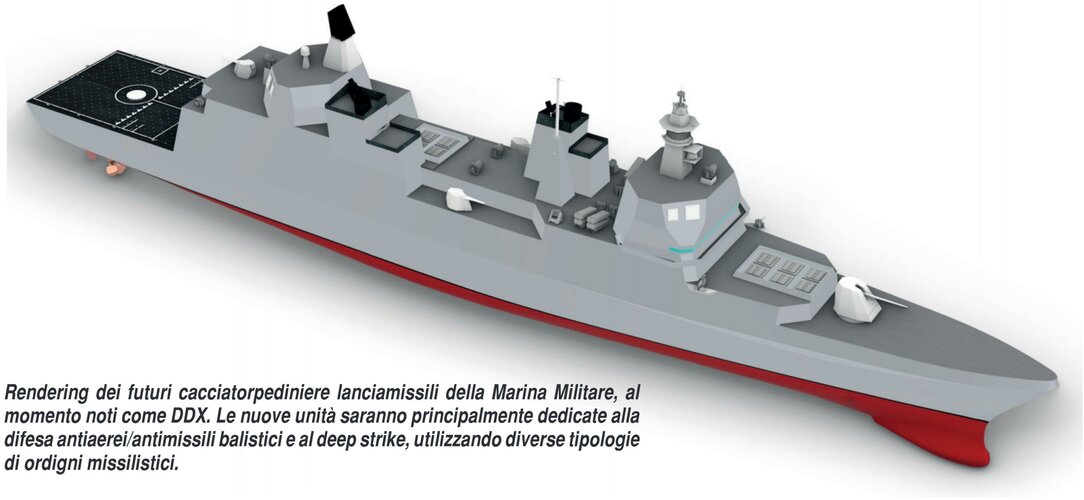- Joined
- 4 July 2010
- Messages
- 2,402
- Reaction score
- 2,725
The Italian Navy is planning a pair of 10,000 ton Destroyers, known for the time being as DDX.

 www.defensenews.com
www.defensenews.com

Italy plans new destroyers for 2028 delivery
Fresh from a burst of shipbuilding spurred by the retirement of old vessels, the Italian Navy is now back at the drawing board to design what it considers the cornerstone of its fleet — new destroyers.
Current plans envisage vessels that are 24 meters wide with a 9-meter draft and more than 300 crew, while offering a top speed of over 30 knots using the CODOGAL (COmbined Diesel Or Gas And eLectric) propulsion system, De Carolis said. The system allows the use of either gas or diesel turbines, plus electric propulsion for lower speeds.
These would be the largest surface combatants built in Western Europe since the 40s.“The U.S. and Russia still operate cruisers, but most other navies today rely on destroyers for fighting power. They must cover anti-air, anti-ship and anti-submarine operations with a focus on integrated air and missile defense, including ballistic missile defense.”
The most “critical task” for destroyers, he added, is protecting carrier battle groups and playing the typical “shotgun role” for carriers. Examples he gave included the 1990-1991 Persian Gulf War when the Italian vessel ITS Audace was part of the escort to the U.S. Navy aircraft carrier Theodore Roosevelt, and during Operation Enduring Freedom in 2002, when the ITS Durand de la Penne escorted the U.S. Navy carriers John C. Stennis and John F. Kennedy.





